Creating Abundance: Lessons from Great Dixter
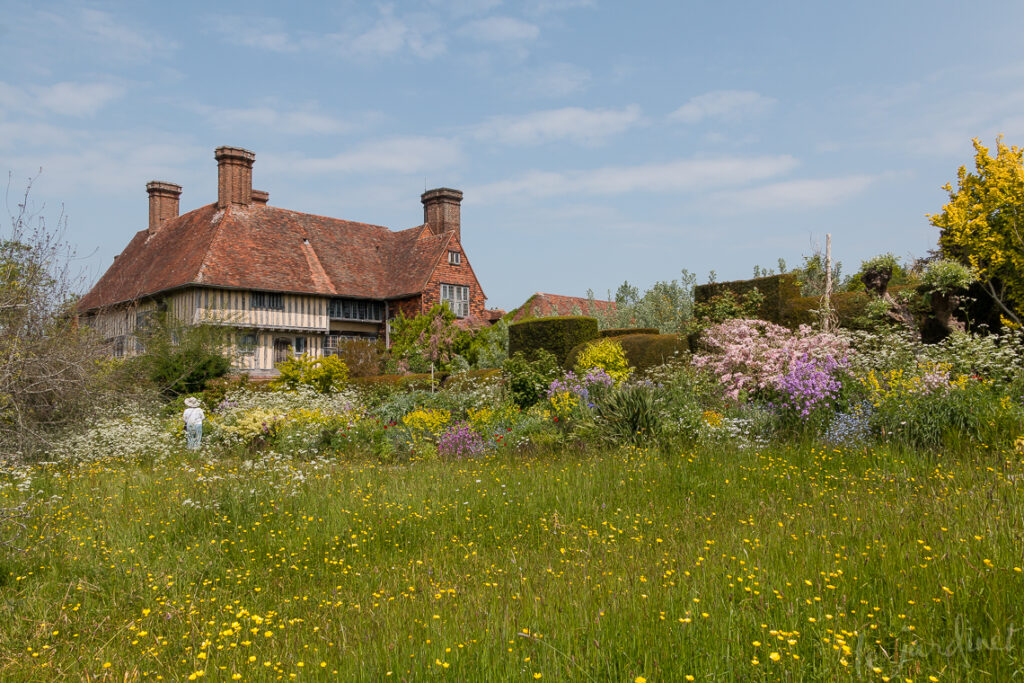
If there is one word that sums up traditional English gardens it is "abundance". You won't find individual plants separated like little islands by oceans of bare earth. Nor will you see the extensive use of groundcovers that we are so accustomed to in America. I often describe English gardens, especially cottage gardens as "friendly": where neighbors mix and mingle unapologetically. Don't be fooled, however. These gardens are carefully designed, edited and managed to maintain this glorious profusion and Great Dixter is the perfect example to see how it's done.
I had the good fortune to visit this garden twice last year, in May and again in July so took the opportunity to seek out 'take home' ideas. Great Dixter is a show garden combining high-impact vignettes with immersive Alice in Wonderland-type experiences, yet even home gardeners with pocket sized patio gardens and budgets can glean ideas on how to create abundance through the use of layering.
Create Boundaries
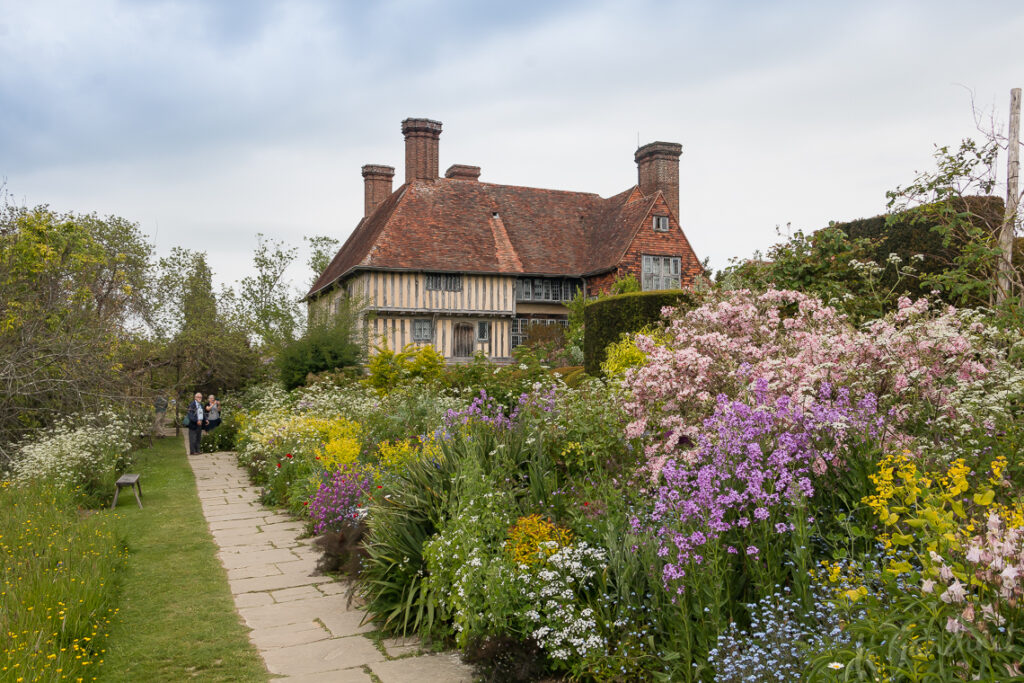
Confined by a hedge and pathway, the densely planted border is allowed to explode into a colorful, layered display
Wildness without boundaries can look unkempt. At Great Dixter the abundant borders are often backed by either a brick wall or a clipped yew hedge. Pathways do more than show guests where they may walk, they also become the picture frame for the botanical painting. In the image above, the stone pathway is partially and intentionally obscured by billowing perennials. By visually expanding the width of this path with a mown strip alongside the looser meadow, it affords a much needed visual breathing space and also better balances the scale of the deep border in mid-summer.
In other areas of the garden, the sheer solidity and scale of topiary is used as a visual boundary for the prolific plantings.
Use Pots
The entrance to the Great Hall at Dixter really needs little in the way of embellishment. It is a remarkable example of medieval architecture and rightly deserves our full attention. The planting beds closest to the Hall are kept fairly low key (by Great Dixter standards) but I love the way a collection of terracotta pots is used as an ever-changing seasonal display. The pots are arranged in such a way that plant height is tiered from tall to short, back to front with a focus on foliage and texture over flowers and small details. They frame the entrance rather than compete with it and draw guests into the space for a closer look.
Terracotta pots are used in other areas too, including a walled garden featuring a pebble mosaic of Christopher Lloyd's beloved dachshund. The cluster encourages guests to slow down and enjoy the moment.
Add Punctuation Points

Don't be afraid to throw in a taller 'see-through' plant, even in the middle of a border. Giant fennel (Ferula communis) is fabulous for this with it's bold yellow flowers.
Although the container plantings were carefully arranged with taller plants in the back, that doesn't mean the same rule has to apply to the landscape border. Indeed punctuating mid-height layers with something tall adds interest. I often use the term 'scrim' to describe this. In the theater, scrim is that fabric which depending upon how it is lit is either fully opaque or fully transparent. It adds an air of mystery. In the garden we can mimic this using tall plants with basal foliage, wiry stems and either seed heads or flowers dancing at the top.
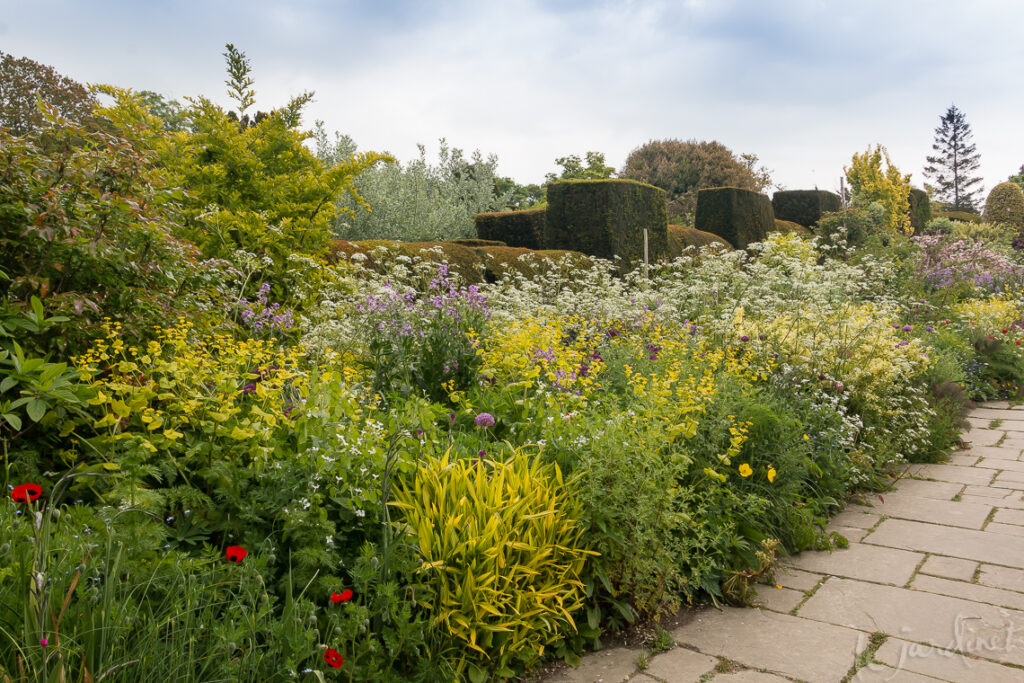 Great Dixter uses several plants to create this scrim effect: False Queen Anne's lace (Ammi majus) is one example, the flat umbels of white flowers creating an ethereal haze above lower plants. They may self-sow, perpetuating the effect from year to year although they are likely edited and supplemented.
Great Dixter uses several plants to create this scrim effect: False Queen Anne's lace (Ammi majus) is one example, the flat umbels of white flowers creating an ethereal haze above lower plants. They may self-sow, perpetuating the effect from year to year although they are likely edited and supplemented.
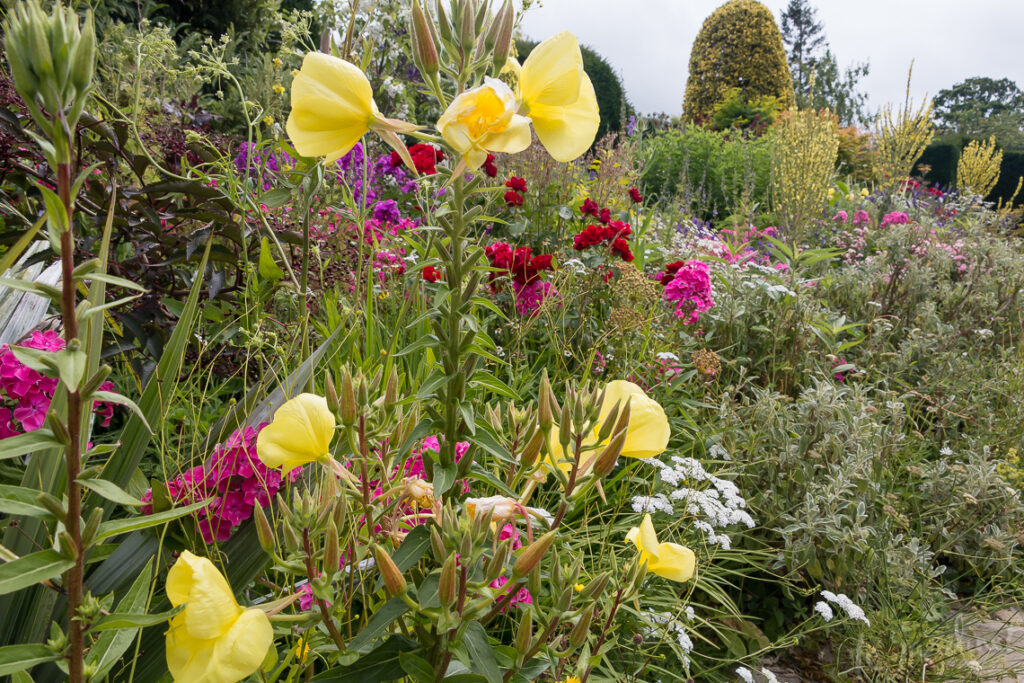
Tall varieties of evening primrose as well as yellow blooming mullein (Verbascum spp.) are included as scrim to punctuate this border.
In my own garden I use tall verbena (Verbena bonariensis) and Whirling Butterflies gaura (Gaura l. 'Whirling Butterflies') extensively for this purpose but added some Ammi majus that I grew from seed last year after enjoying these displays at Dixter.
Plant in Layers
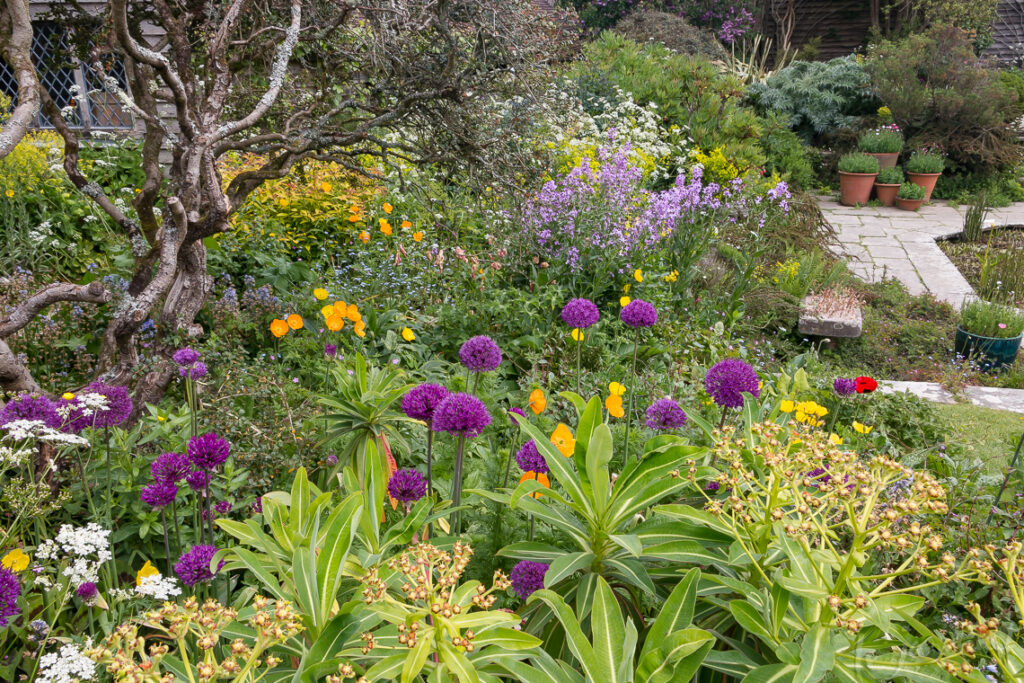
Ornamental onions are planted throughout this sunny border, adding a vibrant splash of purple among the citrus tones.
Good soil management allows for a densely planted tapestry of trees, shrubs, perennials and annuals all underplanted with a wide variety of bulbs. Self-seeding is encouraged, not feared – but there again there is a team of gardeners managing the estate!
For regular home gardeners, the easiest (and lowest maintenance) take-home lesson is to use bulbs to enhance your displays. In my garden I plant daffodils in and around my large border of Arkansas blue star so that even while the perennial is dormant I have welcome color from these yellow spring flowers. The daffodil foliage is hidden by the emerging foliage of the perennial as spring marches on. Hosta and bluebells might be another combination to consider. Or fill pots with bulb displays and bring them out to cluster on the patio when they begin to bloom. (My blog post on Filoli will inspire you).
Here at Great Dixter the ornamental onions (Alliums) were in their full glory during my visits.
Perennials are planted in blocks of color, while understanding the growing habits and needs of each. They are allowed to mingle but have to play nice! No thugs.
Don't be afraid to have plants two-feet-tall or more adjacent to the path. This stunning sea holly-hydrangea combination had me holding everyone up as I dropped to my hands and knees in order to take photographs. It is so simple yet so utterly delicious. I defy you to walk past and ignore it! Maybe that was the intention. A low growing groundcover or perennial might be overlooked. This was theater.
Visit England With Me!
While I won't be taking a tour to Great Dixter this year, I am leading a tour to Devon and Cornwall – and I have room for just two more guests! I promise you, there are lots of exciting gardens to see and I'm always happy to share design insights and tips (if you wish to hear them) as we travel. Check out what our previous guests have said about our tours then get in touch if you'd like to snag those last spots.
Subscribe to Receive Blog Posts
Gardening inspiration delivered right to your inbox from Le Jardinet

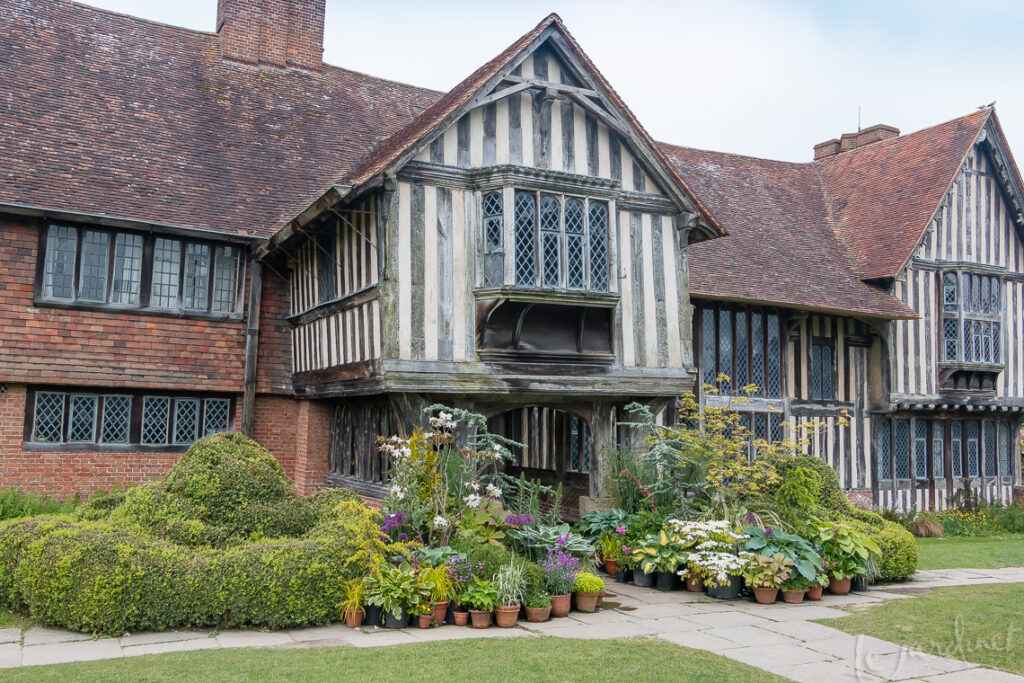
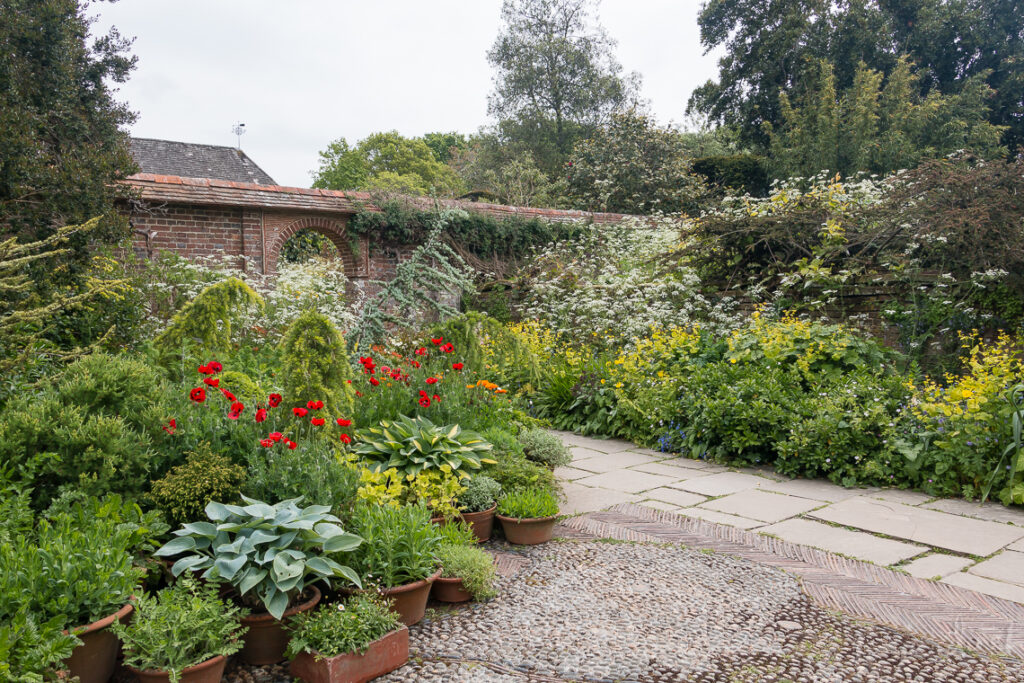
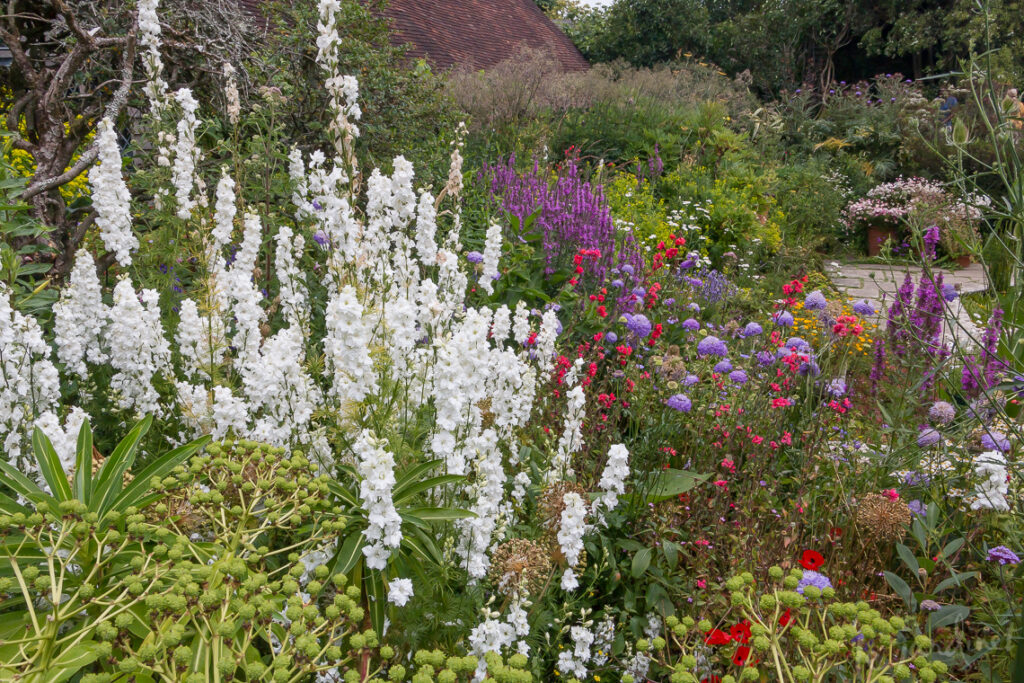
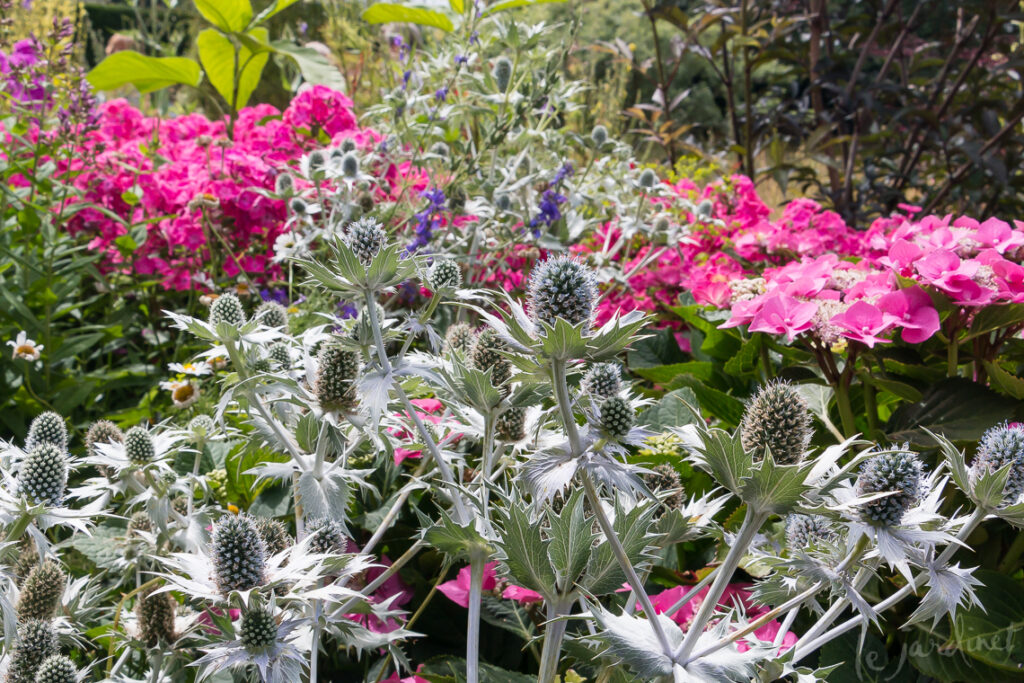

[…] by Great Dixter, I also grew Ammi majus from seed last year to intermingle with the zinnia. They took forever to […]